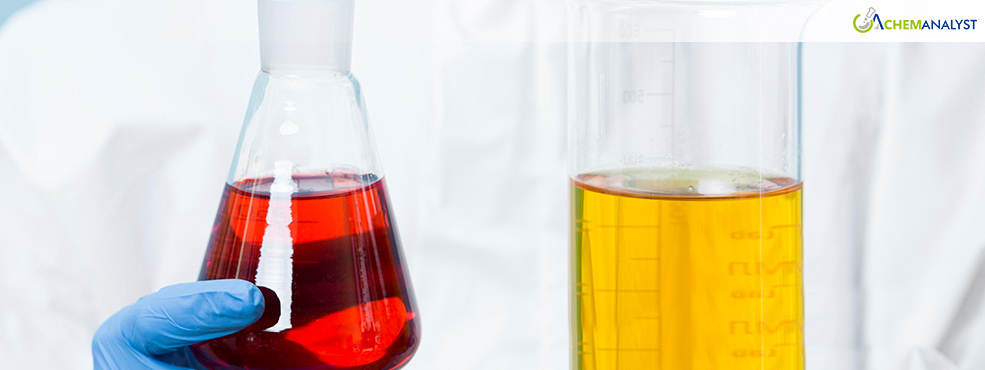Global Propylene Glycol Prices Surge in October Amidst Heightened Demand and Supply Challenges
- 05-Nov-2024 10:30 PM
- Journalist: Yage Kwon
The prices of Propylene Glycol prices experienced a significant rise globally in October, influenced by several factors. This price increase can be attributed to heightened demand of Propylene Glycol from end-user industries, coupled with a constrained supply in the market. As businesses recognized the potential for continued price escalation, many market participants prioritized restocking their inventories to ensure they could meet future needs.
In October, China's manufacturing activity showed positive growth for the first time in six months, signaling that recent government stimulus measures are beginning to stabilize the economy. This improvement was reflected in the National Bureau of Statistics' PMI, which rose slightly to 50.1 from 49.8 in September, crossing the 50-mark that divides expansion from contraction. This uptick in manufacturing was accompanied by a boost in the services sector, highlighting broader economic recovery. As new domestic and export orders increased, demand for industrial materials like Propylene Glycol rose, contributing to its price gains.
In Germany, an unexpected improvement in business morale sparked optimism for economic recovery, offering a glimmer of relief from persistent industrial challenges. This boost in sentiment was bolstered by the European Central Bank's decision to cut its key interest rate to 3.25%, marking the third reduction of the year. This easing of monetary policy fueled consumer confidence, encouraging spending and investment across various sectors, including industries that rely on Propylene Glycol. The resulting increase in demand exerted upward pressure on Propylene Glycol prices.
While, in USA, the ongoing congestion at ports, exacerbated by labor strikes that commenced on October 1 at East Coast and Gulf Coast facilities, has significantly complicated supply chains and contributed to delays in the distribution of Propylene Glycol. These disruptions have intensified the existing supply-demand imbalance, leading to heightened competition for available product and, consequently, driving prices upward.
Additionally, Dow's recent announcement regarding a strategic review of its European assets and plans to shut down a propylene oxide (PO) unit in Freeport, Texas, in 2025 adds another layer of concern. Since propylene oxide is a critical raw material for Propylene Glycol production, this potential reduction in production capacity could further tighten supply, exacerbating price increases in an already strained market.
Moreover, the ongoing attacks by the Houthis on ships in the Red Sea corridor have significantly disrupted international shipping routes, which in turn has contributed to an increase in Propylene Glycol prices. This prolonged instability affects the transportation of goods, leading to shipping delays and higher freight costs as carriers seek to navigate around the conflict zones or enhance security measures.
According to ChemAnalyst's analysis, Propylene Glycol prices are expected to stay elevated in the coming months, driven by sustained demand from key sectors, particularly food and beverage and pharmaceuticals. As winter approaches, the need for Propylene Glycol is likely to increase further, given its application as an antifreeze. This seasonal uptick in demand will contribute to upward pressure on Propylene Glycol prices, as both consumer and industrial requirements intensify.



